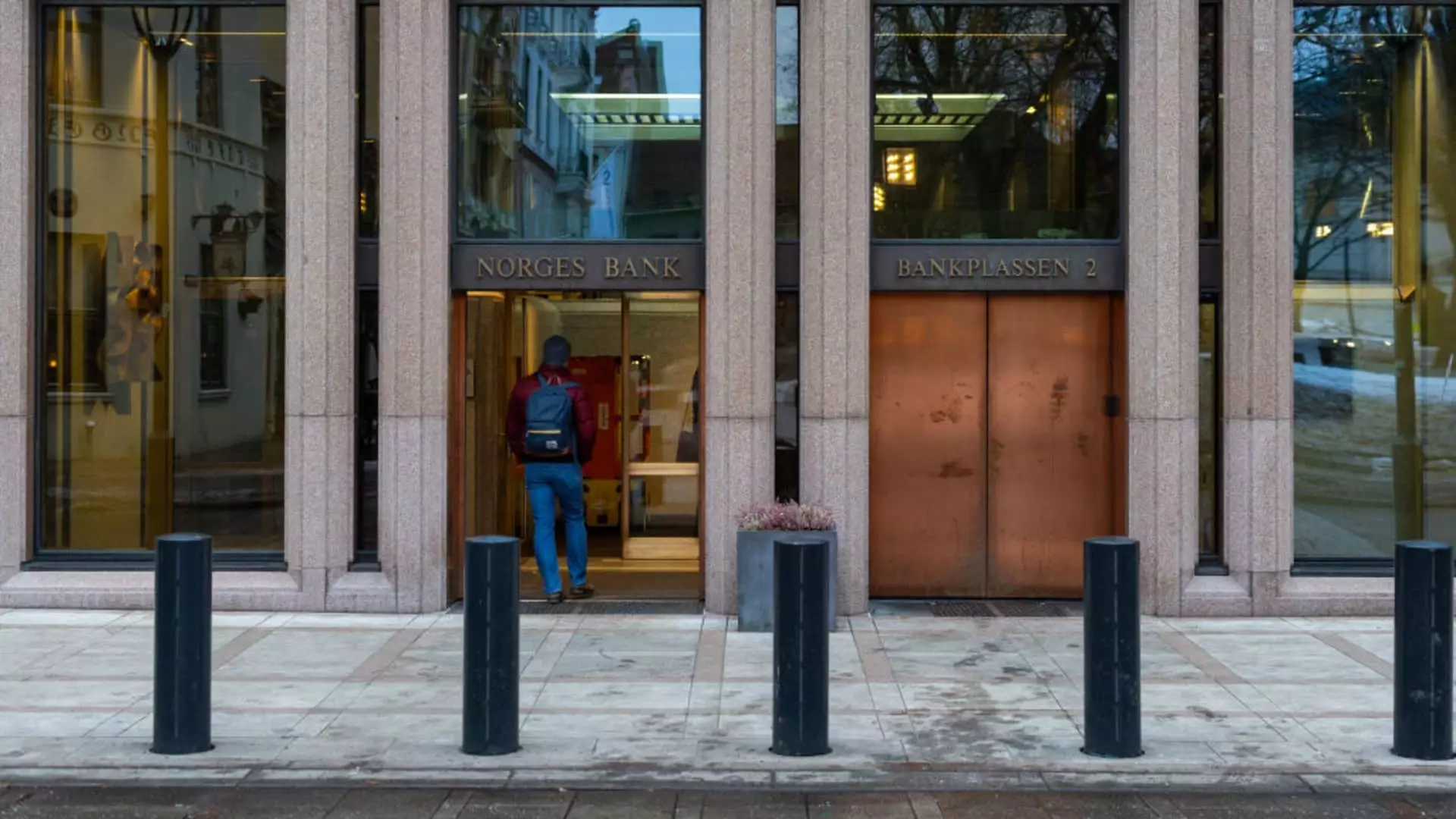Norway’s Government Pension Fund Global, among the most robust sovereign wealth funds worldwide, released its third-quarter results, revealing impressive profits of 835 billion Norwegian kroner (approximately $76.3 billion). A significant driver behind this notable performance was the stock market’s reaction to falling interest rates, illuminating how monetary policy can have profound, far-reaching implications on investment portfolios. As of September’s end, the total value of the fund climbed to 18.870 trillion kroner, showcasing its vast reach and influence in global markets.
The reported quarterly return of 4.4% slightly lagged behind a benchmark index defined by Norway’s Finance Ministry, which was anchored in the FTSE Global All Cap index and Bloomberg Barclays fixed-income benchmarks. This nuance is crucial, as it reflects the fund’s ongoing challenge to consistently outperform its benchmarks, which demand strategic foresight and adept management.
Trond Grande, deputy CEO of Norges Bank Investment Management (NBIM), attributed the fund’s performance to broad market dynamics largely influenced by changing monetary policies. His remarks reinforced the idea that shifts in interest rates can provoke significant market movements, affecting both equity and fixed-income returns. Grande described the quarter as particularly turbulent, characterized by volatility at the summer’s onset, leading into a speculative landscape regarding the Federal Reserve’s actions.
The observation that “with a rising tide, all boats rise” succinctly encapsulates this quarter’s results, suggesting that as market conditions improved, the fund benefitted alongside its investment peers. This phrase points to a collective uplift within the equities market following rate reductions, underscoring a general bullish trend bolstered by investor sentiment.
Notably, equities made up a substantial 71.4% of the fund’s portfolio, yielding a commendable 4.5% return during the quarter. Conversely, fixed-income investments, which represented 26.8% of its assets, returned 4.2%. This balance illustrates the fund’s strategic asset allocation aimed at maximizing returns while navigating a changing economic landscape.
Current global economic conditions show a unique easing cycle among major central banks, as they recalibrate their monetary policies in response to declining inflation rates. Key players, including the U.S. Federal Reserve and the Bank of England, have implemented significant rate cuts, which diminish the cost of borrowing and energize investment activity. This trend indicates a shift towards a more accommodating monetary policy environment, intending to stimulate growth and encourage spending amid lingering uncertainties post-pandemic.
Despite the bright quarterly results, NBIM has maintained a cautious stance regarding future market conditions. Grande articulated concerns about heightened uncertainty stemming from an unpredictable geopolitical climate, which introduces increased risk to global stock markets. This acknowledgment reflects a prudent recognition that external factors can swiftly alter the economic landscape, complicating the fund’s investment strategies.
Particularly within the technology sector, which has seen an exhilarating rise fueled by discussions surrounding artificial intelligence, Grande highlighted the need for discernment. The exuberance surrounding tech stocks could mask underlying vulnerabilities, necessitating a more cautious approach in navigating potential market corrections. Such perspectives signify a blend of optimism and wariness, indicating that while opportunities abound, the backdrop remains fraught with risk.
The Future of the Fund
As Norway’s sovereign wealth fund continues to sculpt its investment legacy, the interplay between market dynamics and effective risk management will play a critical role. With its vast resources already invested in over 8,760 companies across 71 countries, the fund not only impacts the global economic framework but also exemplifies how a strategic approach to investment can weather financial storms. As central banks shift policies and the geopolitical landscape evolves, the fund’s adeptness at anticipating and responding to these variables will ultimately determine its ongoing success in an unpredictable world.

